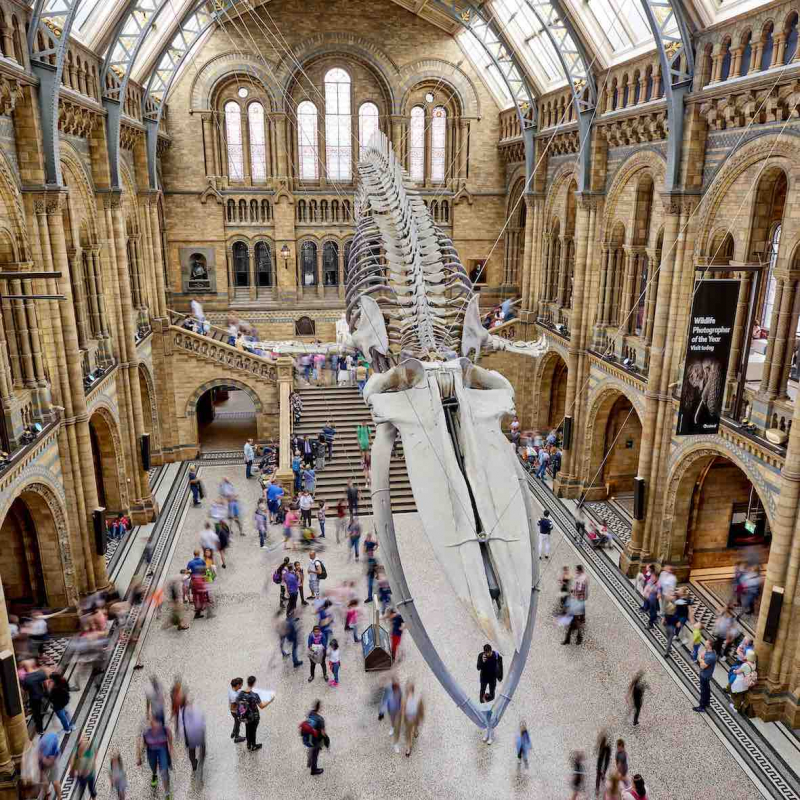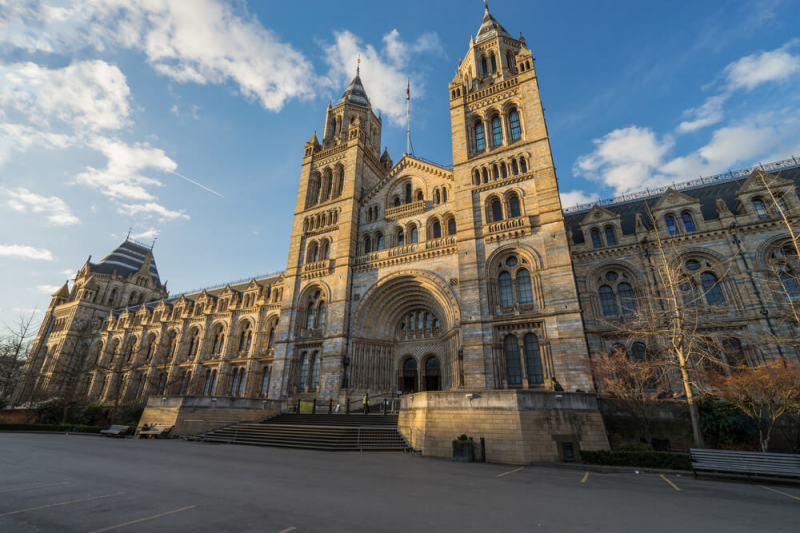Natural History Museum
The Natural History Museum in London houses a diverse collection of specimens from several areas of natural history. The Science Museum and the Victoria and Albert Museum are the other two main institutions on Exhibition Road in South Kensington. The Natural History Museum, on the other hand, has its main entrance on Cromwell Road.
The museum has 80 million specimens of life and earth science in five primary collections: botany, entomology, minerals, paleontology, and zoology. The museum is a research center that focuses on taxonomy, identification, and conservation. Given the institution's history, many of the collections, such as specimens gathered by Charles Darwin, are both historically and scientifically significant. The huge Diplodocus cast that dominated the vaulted central hall before it was replaced in 2017 with the skeleton of a blue whale hanging from the ceiling made the museum notable for its exhibition of dinosaur bones and magnificent architecture—sometimes labeled a cathedral of nature.
The Natural History Museum Library has significant collections of books, periodicals, manuscripts, and artwork related to the scientific departments' work and study; admission to the library is by appointment only. The museum is regarded as the world's preeminent center for natural history and associated study.
Location: Cromwell Road, London, England SW7 5BD
Website: nhm.ac.uk












